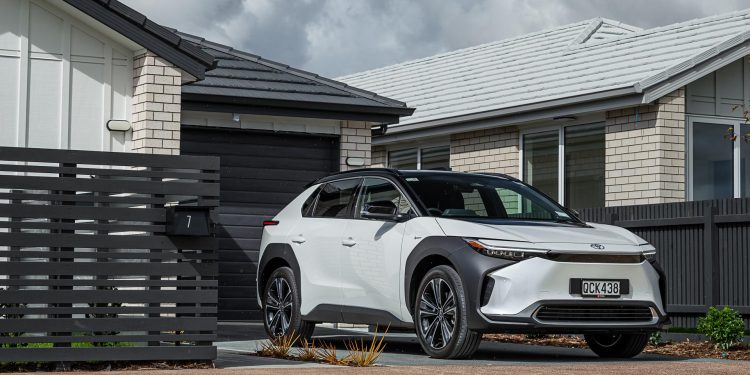2024 Toyota bZ4X Pure review
Words: Peter Louisson | Photos: Isaac Western
The first EV from Toyota is here, with an alphanumeric nameplate to distinguish it from the ICE powered models. The bZ4X name is forgettable but the vehicle certainly isn’t.
Toyota was amongst the first to offer ICE power hybrids (like the Toyota Prius) and they now power most of what the brand sells.
Initially there was essentially no EV range with the self-charging hybrids, but nowadays they can ease along with the green EV sign showing for some kilometres, especially under low loads.
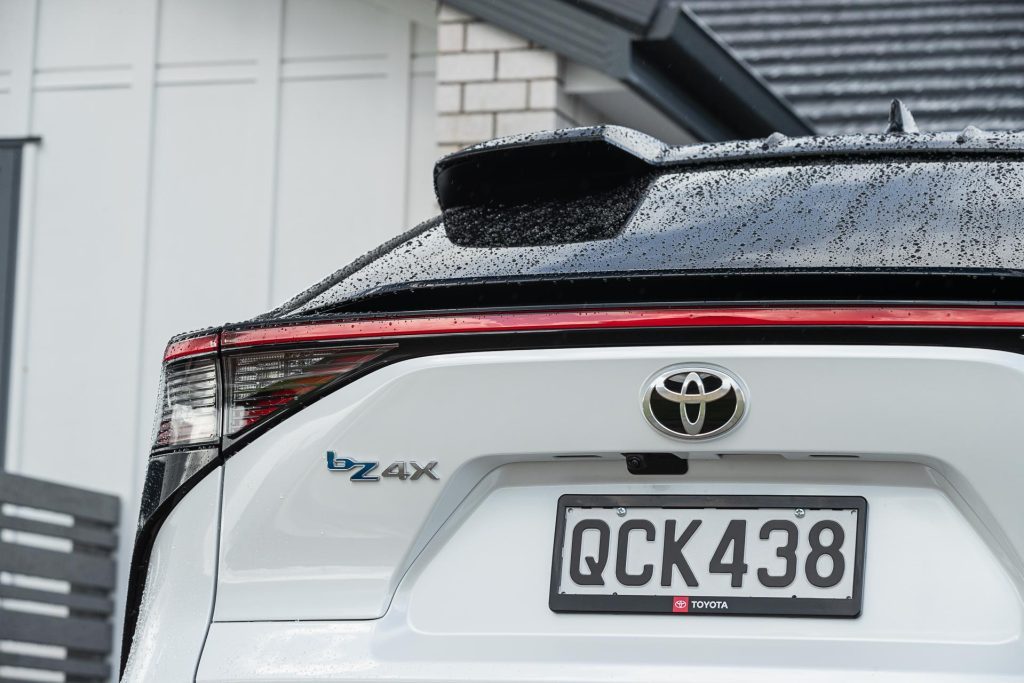
Hybrids now dominate for Toyota yet it has produced no pure EV, until recently. The company felt that its mild hybrids had served them well and would continue to do so, with roughly two-thirds of the fleet now electrified.
Toyota techs also believed that range was an issue with lithium-ion batteries, as it certainly was in the beginning. Besides, their engineers have been busy beavering away with solid state lithium-ion tech.
So Toyota was one of the last of the major manufacturers to offer an EV but it wasn’t alone. Subaru was also slow to jump aboard the EV train, as it was with hybrids, and asked compatriot Toyota to help it build an EV.
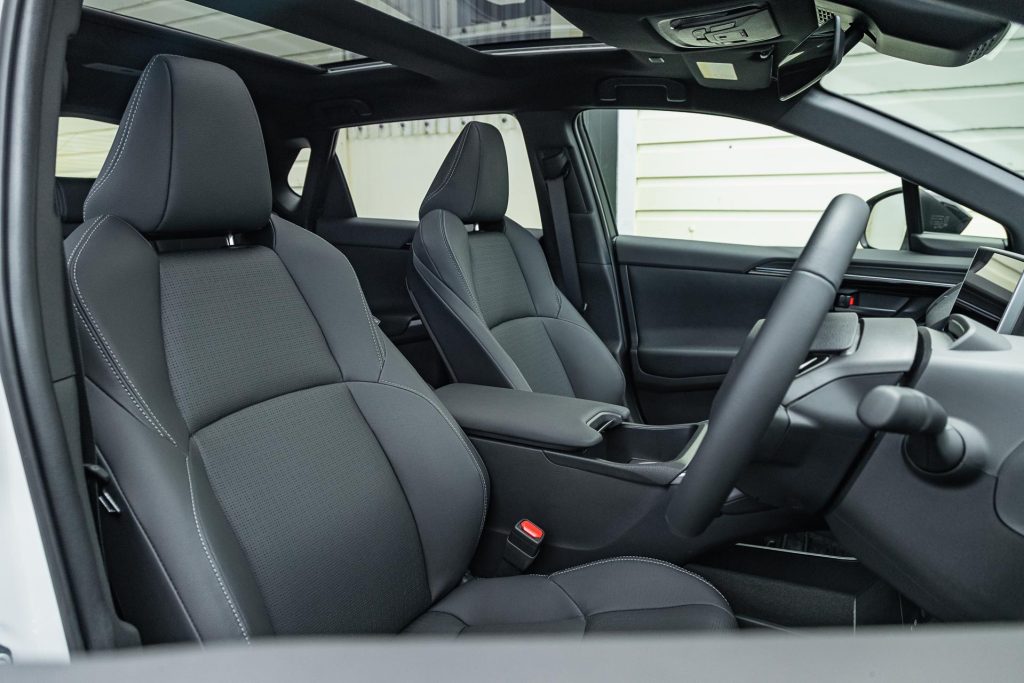
That was perhaps just the spur that Toyota needed, for the pair then went ahead and co-developed Subaru Solterra and bZ4X.
On the latter’s name, which completely no-one can seem to remember except for Toyota salespeople, the bZ refers to beyond zero, as in environmental impact, while the 4 apparently references the size of the vehicle and the X represents off-road ability.
We’d suggest the X means crossover, given one of the two models here is front-wheel drive and has nominal ground clearance of 182mm. BeZ would have been simpler, more memorable.
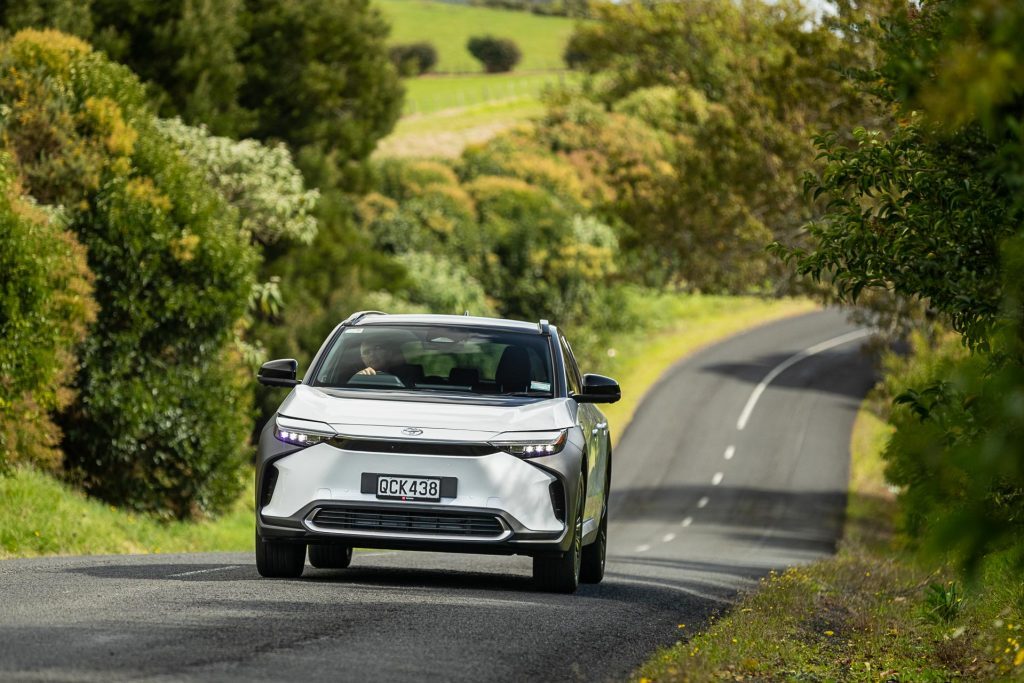
A pair of bZ4X variants
Anyhow, there are two bZ4X models here, with similar mechanicals except that one gets a motor for the front (150kW/266Nm) and the other gets two motors, one for each axle.
Each makes 80kW and 168Nm (total 160kW, 337Nm). The Pure references the single motor, and we drove that first. Both this and the “Motion” AWD variant share a 71.4kWh battery pack (64kWh usable) which supposedly gives a range of 485km for the dual-drive ‘Motion’ and 535km for the Pure.
But those are fanciful NEDC figures. Subtract about 100 for WLTP. Both times a full recharge had the Pure reading 426km. And at pick up the Motion DTE showed 389km.
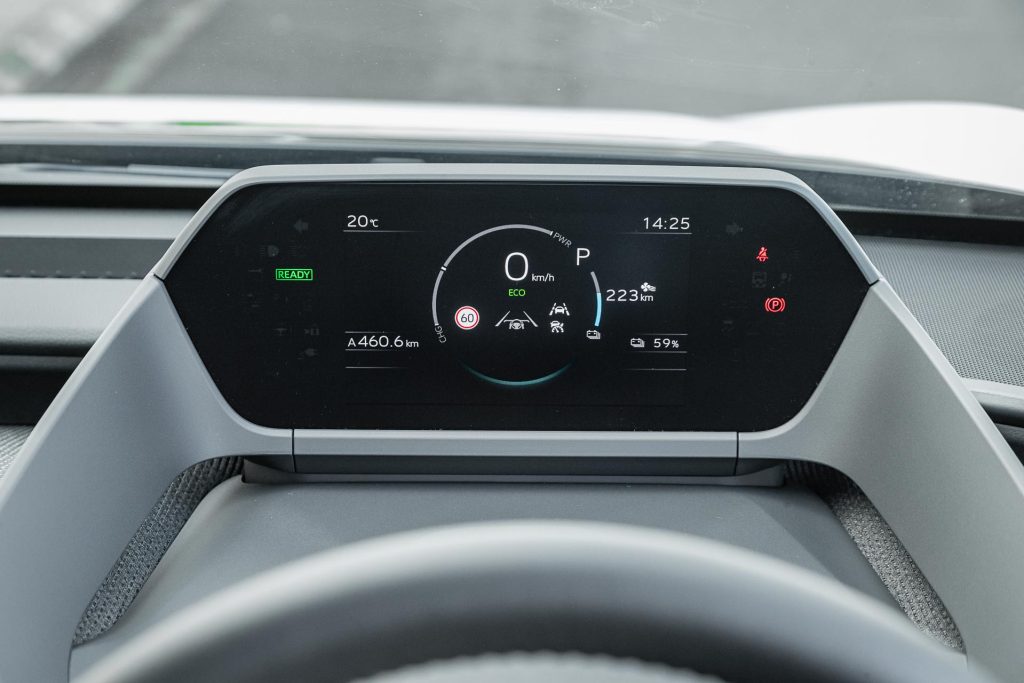
On day one we drove the Pure out to Hampton Downs via the fun route, ran the numbers (0-100 in 7sec flat, claim 7.5) and then drove home up SH1, using up 47 per cent of the battery pack’s energy store.
On our emergency charger it took 24 hours to get back to 100 per cent. That was for roughly 200km of travel at open road speeds. So you’d expect more in mixed use but 535km seems a real stretch.
We’d just exited the Torres EVX, KGM’s first electric offering which is slightly bigger and less expensive. It was a pleasure not being repeatedly chimed at by the bZ4X.
Actually charmed is closer to it. I liked this from the start and liked it even more as the kilometres wore on.
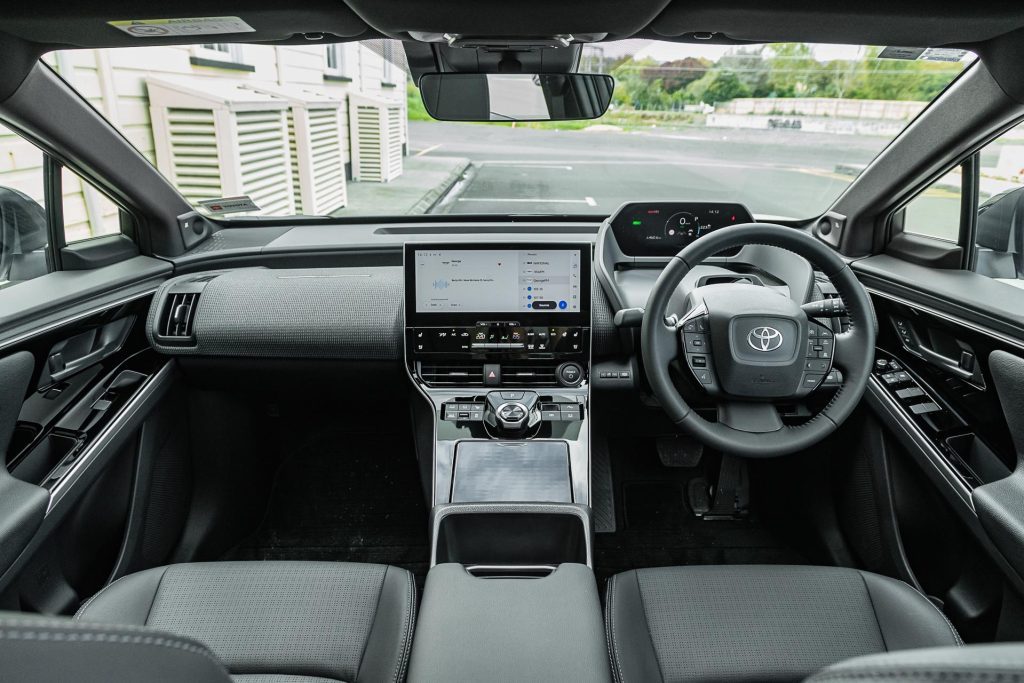
It feels just about right in terms of EV kerb weight – things generally start to go awry on the wrong side of two tonnes – and this scales up just under that.
Here’s something a bit different too; there are no Power or Normal modes as such but there is an Eco mode. Only it’s not a drive setting; it just reduces energy use slightly by optimising the AC system.
That explains why the throttle felt no different with Eco mode on or off. For that matter, range didn’t change with AC on or off either.
There’s a regen button too, and the image suggests one-pedal driving but it isn’t quite that. You have to take your eyes off the road to activate it, down by the rotary shift lever.
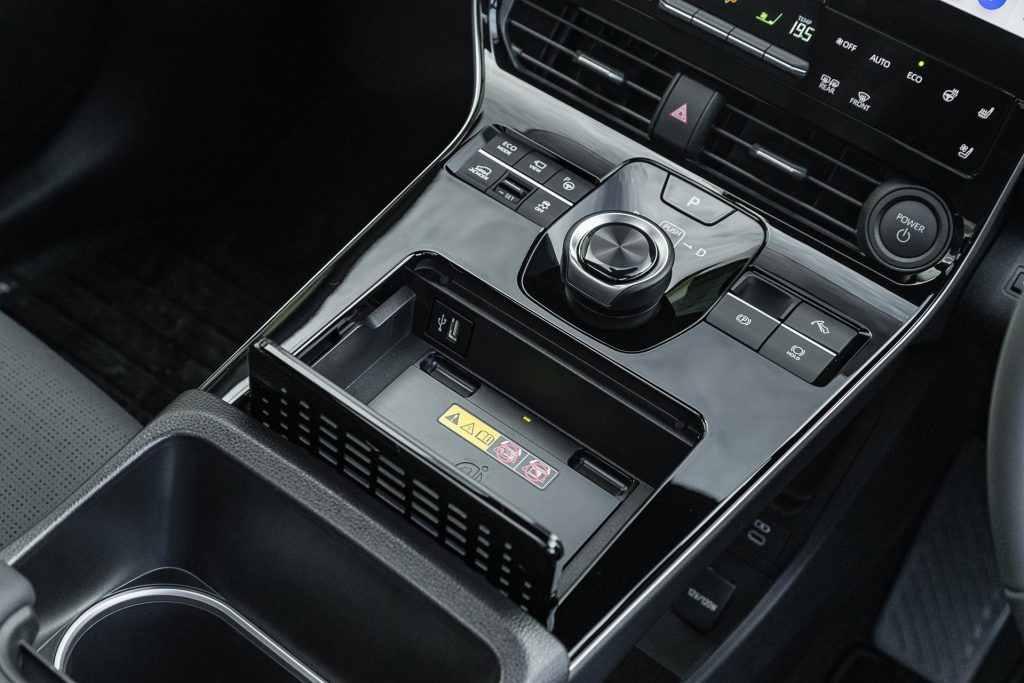
We used it because we like variable regen but it really needs to be resited elsewhere for safety reasons.
Sweet runner
Anyhow, this EV goes rather well, with smooth take off and handy overtaking power. It’s the same for the ride and handling mix.
On the odd occasion at slower speeds it can seem a touch firm but for the most part, and likely with more people on board, it rides just swell. It isn’t the quietest EV we’ve driven but nor is it ever rowdy.
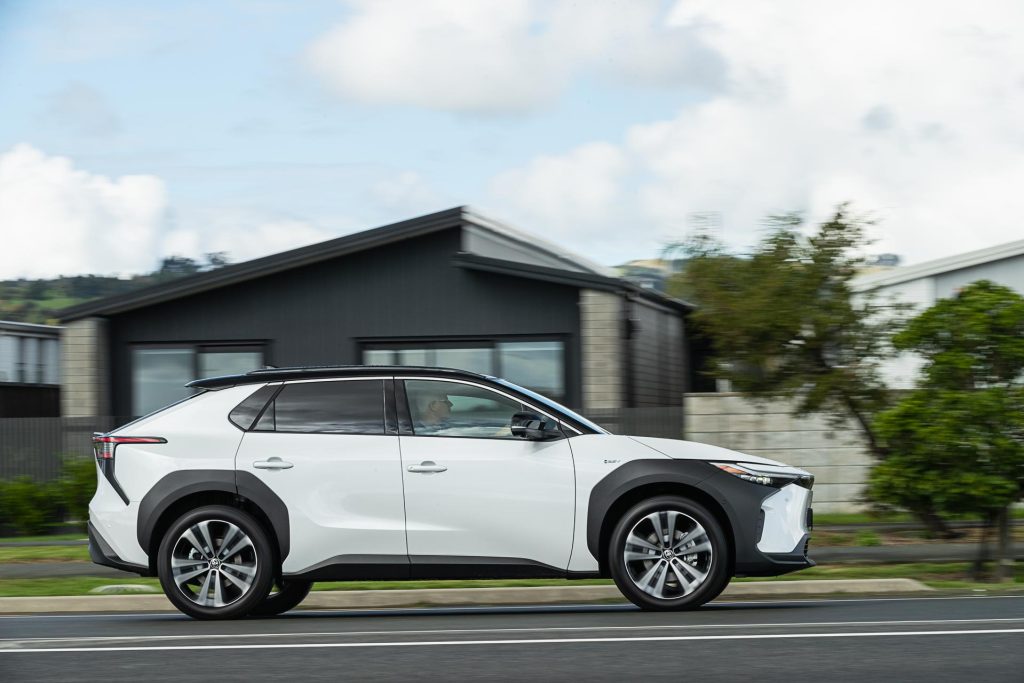
We like the handling which is fun, much more than the Torres we’d just exited, for it doesn’t squeal into understeer at the first sign of a corner. If you push the boat out some, the ESP light flickers and there’s a hint of understeer but it returns to its line with a momentary lift.
A couple of other points. While this has traffic sign recognition and nav, it has no wash wipe unit at the rear and you must turn off the lights manually at shut down or it dings at you.
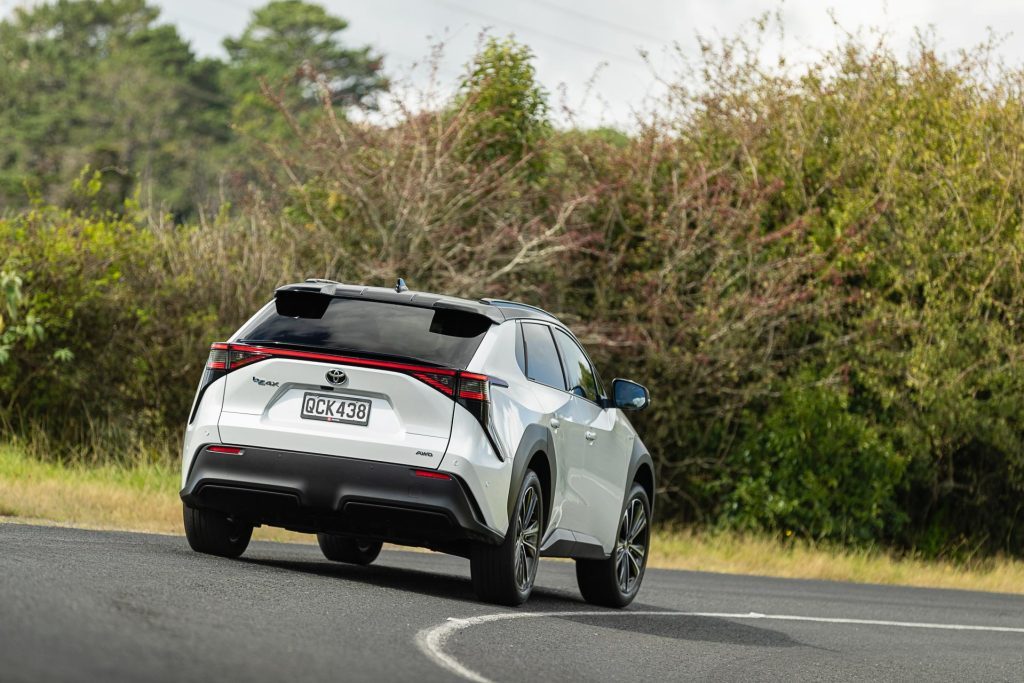
Seats are plush, room in the rear typically EV generous and while the boot space is good, all but the floor is finished in hard plastics. The fifth door is powered, happily. Both this and the Motion have a 750kg braked and unbraked towing capacity.
About the one thing that will hold bZ4X back is its price; at $72,990, we’d probably be more than happy with a Toyota RAV4 hybrid, save on the RUCs and put the $20k towards gas.
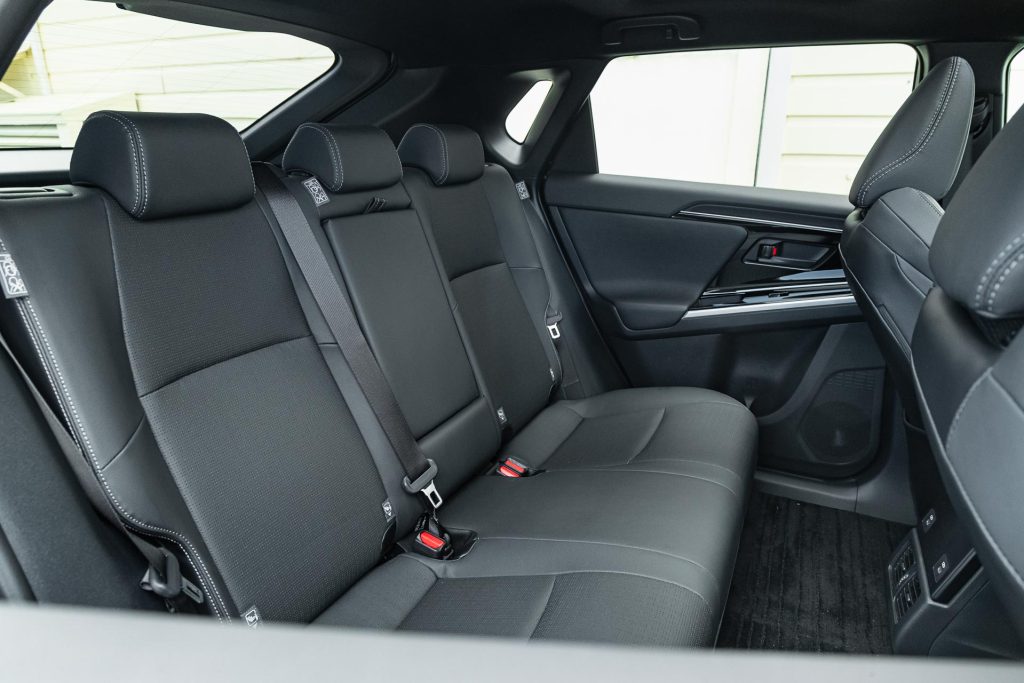
Does it put the e into Motion?
Swapping to the Motion and it immediately looks flasher from the outside, with bigger, blingier 20-inch machined alloy wheels while inside the powered driver’s seat retracts automatically.
There’s a camera in your face too that wasn’t part of Pure’s make-up. This is there to monitor driver distraction. And yes, you can easily be distracted by dicking around with the centre screen.
Like when you save stations, for instance. Still, with familiarity it will tell you off less often.
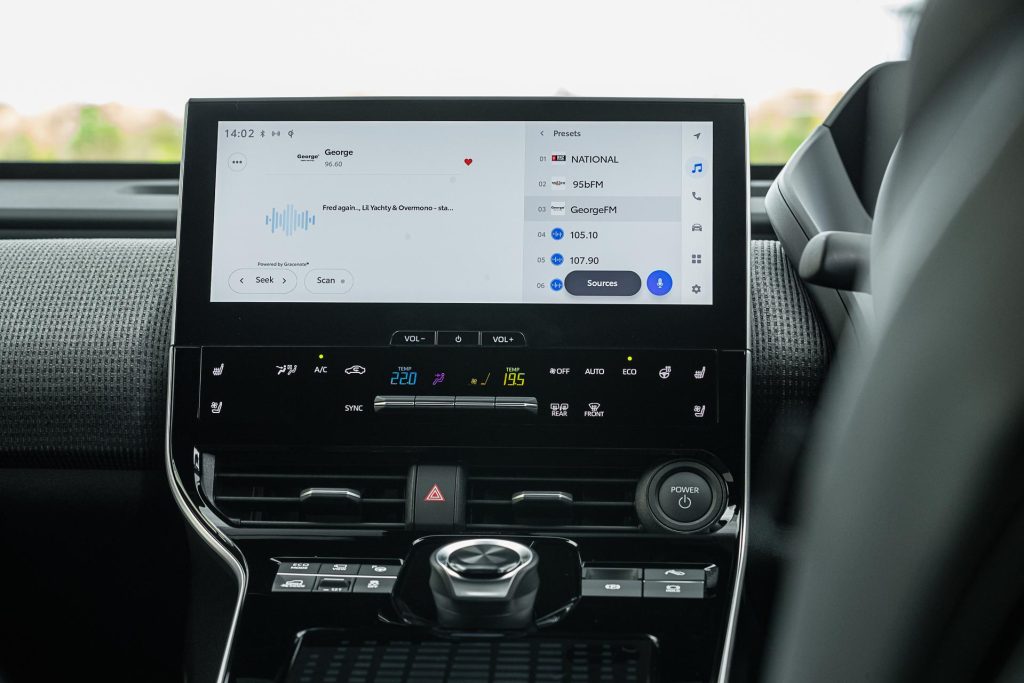
Other differences include an upgrade to synthetic leather seat trim, a panoramic sunroof, and a bigger split rear spoiler. There’s also the Toyota teammate advanced parking system which works really well.
Locate a space, and it literally does the rest. You just have to learn to trust in autonomy. Other additions include a driver’s seat memory, steering wheel heater and front seat ventilation.
On the safety front, Motion adds a 360-degree surround camera system and blind spot monitor with safe exit assist.
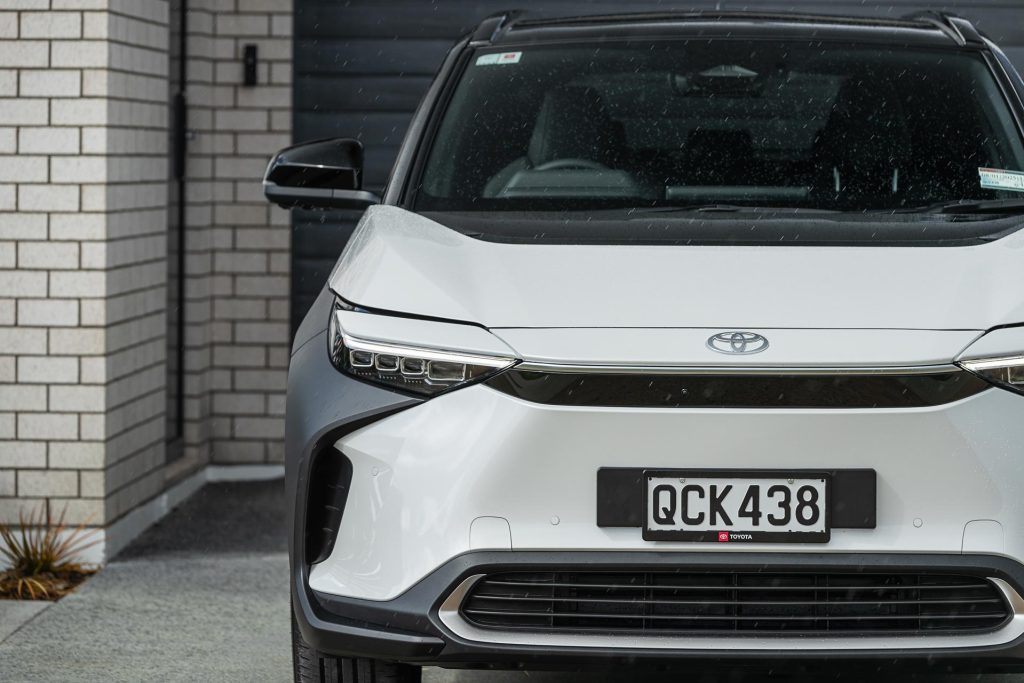
Both variants come with the Toyota Safety Sense packing which includes AEB, Adaptive Cruise, Road Sign Recognition and auto high beams, amongst other things. They each carry a five-star ANCAP rating, issued in 2022.
Motion also gets a nine-speaker JBL premium sound system, along with a subwoofer. Both models come with a high resolution touchscreen that includes sat nav, and ACP and AA via USB or wireless link.
Extra pace but less range
The extra ask for the motion is $10k ($82,990 which puts it midway in price between the two Solterra variants) but you do get slightly more power to go with the spec and a bunch more torque (337 vs 266Nm) and of course there’s the AWD aspect as well.
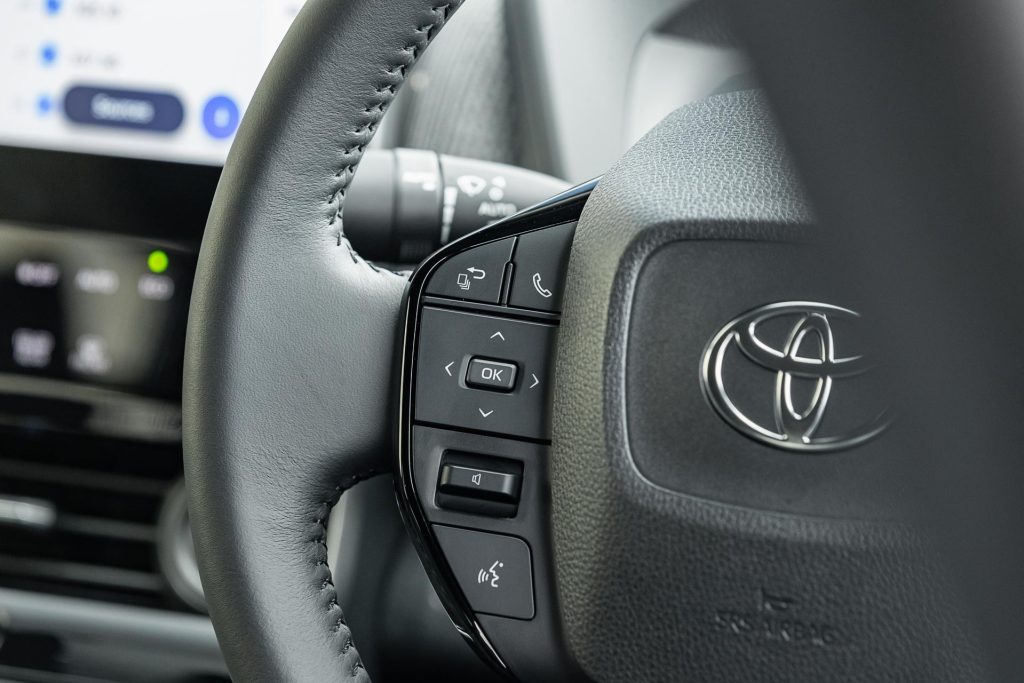
Both variants are available at present with four years of complementary free servicing.
Toyota rates mean energy consumption at 14.1kWh/100km compared with 12.8 for the Pure, partly explaining the reduced range. We noted energy use around 17kWh/100km on the expressway heading north.
That’s a couple of kWh up on the Pure but then it does have a wee bit more performance too. It is roughly half a second faster in the sprint but there’s not quite as much of a disparity on the overtake, roughly half that.
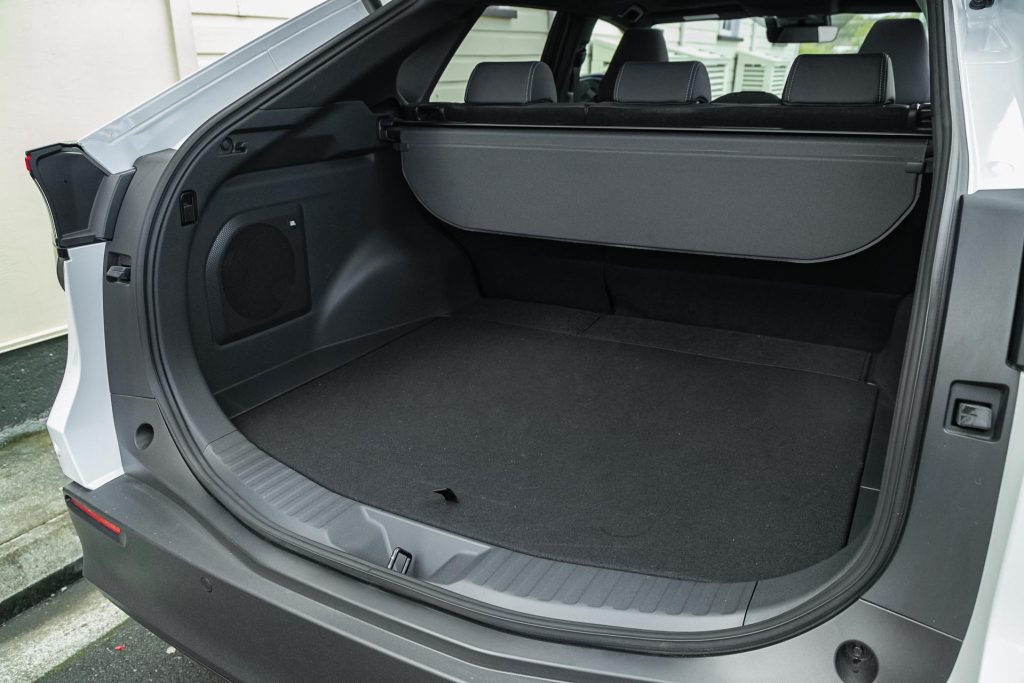
The 90kg of extra weight partly cancels out the added urge. Emergency braking distances were somewhat ordinary with both, in part reflecting the two-tonnes of weight.
It’s a similar scenario with the ride and handling. Yes, sure, the Motion is a bit more secure in the bends (AWD and lower profile rubber) and turns with a touch more ease but given how well the Pure does the differences aren’t marked.
In the end it will come down to whether or not you need four-wheel drive, and secondly whether items like a sunroof, heated wheel, powered pews and seat ventilation are important to you.
Personally, I think the Pure is fine, though the Motion does look better with its smarter, bigger wheels. And the $1000 two-tone colour option (ebony roof) is sharp too.
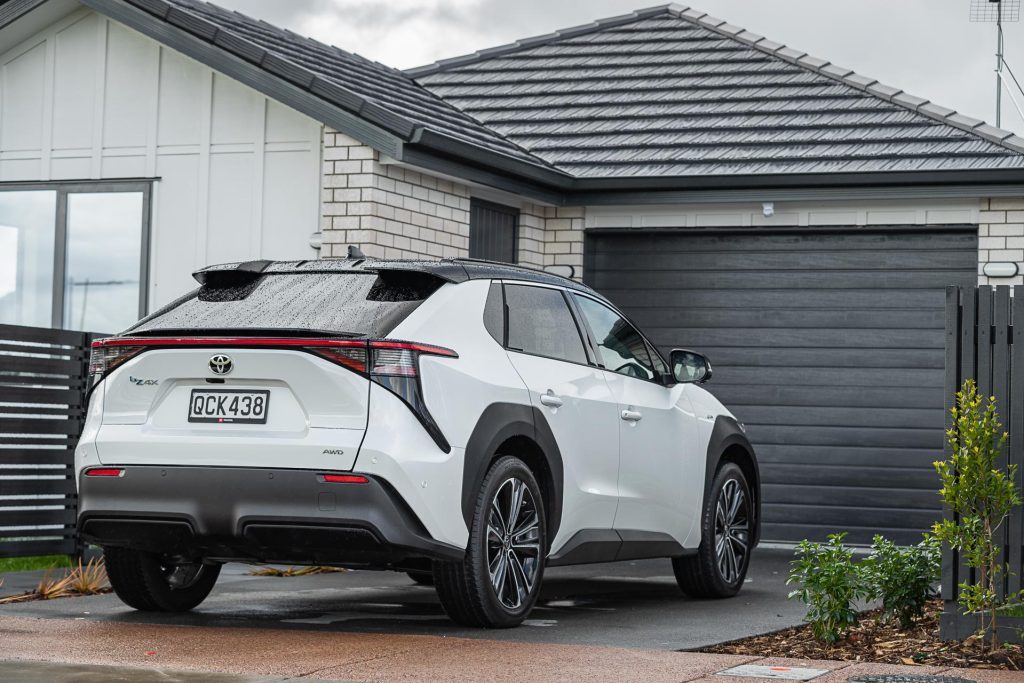
But given the spec of the Pure is reasonably replete and there are no towing differences between them you’d have to really want the Motion for particular reasons to justify the $10k extra.
And both look a bit expensive when you compare them with the current $59,990 ask of Volkswagen’s ID.4, not that that will last forever.
| Model | Toyota bZ4X Pure |
| Price | $72,990 |
| Motor | 150kW, 266Nm |
| Battery | 64.0kWh net |
| Range | 432km |
| Drivetrain | Single-speed auto, FWD |
| Energy Use | 12.8kWh/100km |
| C02 Output | 0g/km |
| 0-100km/h | 7.02sec |
| 80-120km/h | 5.16sec (148.9m) |
| 100-0km/h | 36.49m |
| Stability systems | ABS, ESP |
| Safety | AEB, ACC, LDW, RCTA, ALK, AHB |
| Luggage capacity | 452L |
| Tow rating | 750kg (750kg braked) |
| Service intervals | 12 months, 15,000km |
| Warranty | 3yrs, 100,000km |
| ANCAP rating | 5 Stars (2022) |
| Weight | 1905-1940kg (claimed) |
This story first appeared in the May 2024 issue of NZ Autocar magazine.


